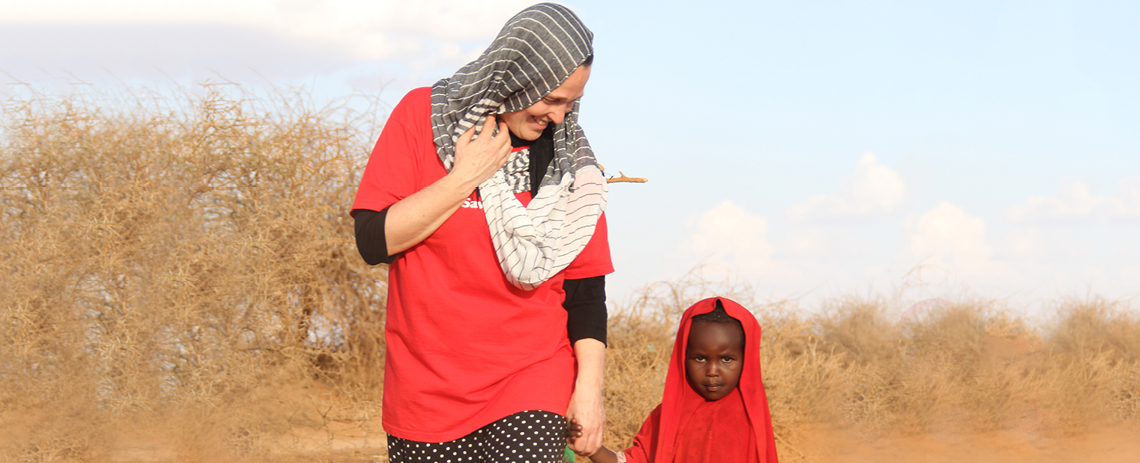PART 1: INSIDE THE CHILD HUNGER CRISIS WITH PATRICIA ERB, OUR PRESIDENT AND CEO
In March, the United Nations declared that the multiple droughts, food shortages and even famine happening today in Ethiopia, Kenya, Nigeria, Somalia, South Sudan and Yemen mean that the world is facing its worst humanitarian crisis since 1945. Millions of people need urgent help.
For the East African countries – Ethiopia, Kenya, Somalia, South Sudan – the situation has deteriorated from season to season primarily due to climatic shocks and poor rain performance over the last four years. The successive droughts have pushed the characteristic resilience of people living in this region to the limit. Children are the most vulnerable in these circumstances; they are suffering malnutrition in increasing numbers and are at risk of significant loss of life if we do not act now.
I have just returned from Somaliland. The images of the trip flow in my memory in a similar fashion to the clouds of dust that followed us through this trek to see what Save the Children is doing in response to this serious food crisis in the Horn of Africa. We drove in a caravan of jeeps through the windy, bumpy paths and the overwhelmingly dry soil would create clouds of dust in a monotone brown covering everything, over shrubs, animals and people. Desolation loomed as far as the eye could see. There was no water in the riverbeds, no green in the vegetation.
Everywhere we saw sheep and goats that were weak, searching for food and water, among them dead carcases. We stopped to see a camel, too weak to stand on its own. This story – of animals growing weak, the unsuccessful search for food and water, was repeated over and over again by the people we spoke to; people so willing to share their story of loss with us. For the majority of families in this region, their livelihood is their livestock, as they are pastoralists. I felt such sadness as each woman I interviewed spoke of herds of sheep that had dwindled from 200 to 15, from 150 to 10, from 400 to 30 and on and on. The repetitiveness of the stories was also poignant. They had a cathartic need to tell. I saw a semi-accepting desperation in their eyes, including the looming question of what was in store; the painful, unspoken fear that what was happening to the herds could spread and this same fate would reach their children. The boys and girls surrounded us, the small ones clinging to their mothers and venturing to touch us and walk with us to see the dead bodies of the loved animals they lost, representing their food – meat and milk – and also their playmates.

We had a respite as “the feast of water” appeared with Save the Children’s water trucking program. Water spilled into community-made reservoirs and line ups appeared as people waited to fill their yellow plastic jerry cans. Donkeys were loaded to carry the weight to places that were more distant. Camels came to drink, shaking their heads and spilling droplets in the dusty air as their caregivers sang to us the camel song, the rhythm seeming to help those doing the heavy lifting. Access to clean water is a fundamental human right, but it’s also a sacred right, and we observed the relief and cadence of the organized distribution, the beauty of an intervention that works. And then the sigh, as the need is bigger than the help that is available.
We were told of another intervention that works, the cash transfer distribution. Save the Children provides cash to households, who use the money to buy food and to cover serious need, according to the realities of their family and their circumstances. As purchasing power declines, mothers pointed out that this is a program that is effective to support local markets that are struggling. They themselves are the best placed to choose what is their family’s greatest need each day. Save the Children is targeting the most vulnerable households with these unconditional cash transfers, but again we see that the need is greater than our present reach.


